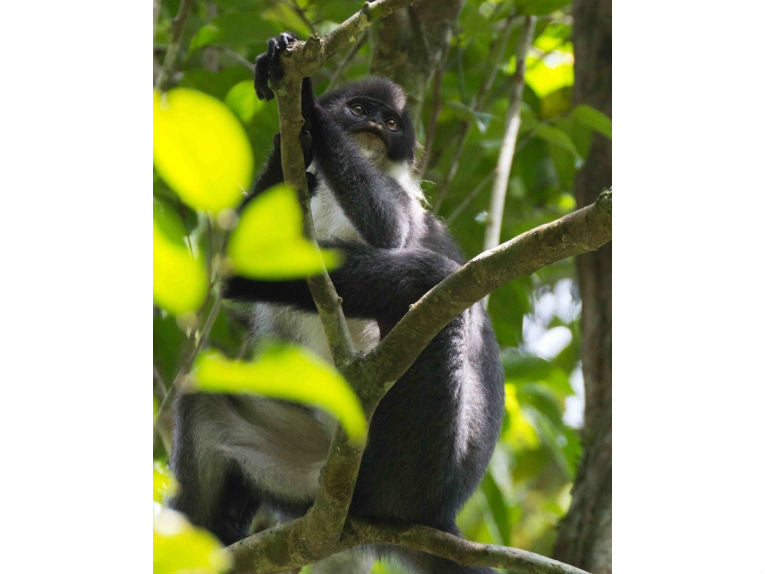A monkey thought to be extinct, Miller's Grizzled Langur, has been found in Wehea Forest, Borneo
A monkey that was believed to be extinct has been discovered by scientists in Borneo. The Miller's Grizzled Langur primate was found in a rainforest, west of its previously known habitat.
The Miller's Grizzled Langur (Presbytis hosei canicrus) was so rare that there were few images of it prior to the expedition to Wehea Forest in East Kalimantan.
Brent Loken, from Simon Fraser University, British Columbia, Canada, says, "Discovery of P.h canicrus was a surprise since Wehea Forest lies outside of this monkey's known range. Future research will focus on estimating the population density for P.h. canicrus in Wehea and the surrounding forest.
"Concern that the species may have gone extinct was first raised in 2004, and a search for the monkey during another expedition in 2008 supported the assertion that the situation was dire."
The monkey belongs to the small primate genus Presbytis that lives in Borneo, Sumatra, Java and the Thai-Malay Peninsula. Up until now the habitat of the Miller's Grizzled Langur was believed to be a small area in north east Borneo, where forest fires, human interference and farming and mining had all taken their toll.
The 38,000-hectare Wehea Forest contains a large area of virtually undisturbed rainforest that is home to at least nine rare primates, including the Bornean orangutan and gibbon.
The scientists set up, watched and photographed the animals at mineral licks - and made the discovery that the Miller's Grizzled Langur was still alive.

Miller's Grizzled Langur; Credit: Eric Fell
Brent Loken says, "It was a challenge to confirm our finding as there are so few pictures of this monkey available for study. The only description of Miller's Grizzled Langur came from museum specimens.
"Our photographs from Wehea are some of the only pictures that we have of this monkey."
Dr Stephanie Spehar, Assistant Professor of Anthropology at University of Wisconsin Oshkosh, USA, explains, "East Kalimantan can be a challenging place to conduct research, given the remoteness of many remaining forested areas, so it isn't surprising that so little is known about this primate.
"We are very grateful to our local partners. This discovery represents the hard work, dedication, and collaboration of Western and Indonesian scientists, students, NGOs, as well as local communities and government."
Brent Loken adds, "While our finding confirms the monkey still exists in East Kalimantan, there is a good chance that it remains one of the world's most endangered primates.
"I believe it is a race against time to protect many species in Borneo. It is difficult to adopt conservation strategies to protect species when we don't even know the extent of where they live. We need more scientists in the field working on understudied species such as Miller's Grizzled Langur, clouded leopards and sun bears."
The full report has been published in the American Journal of Primatology.










